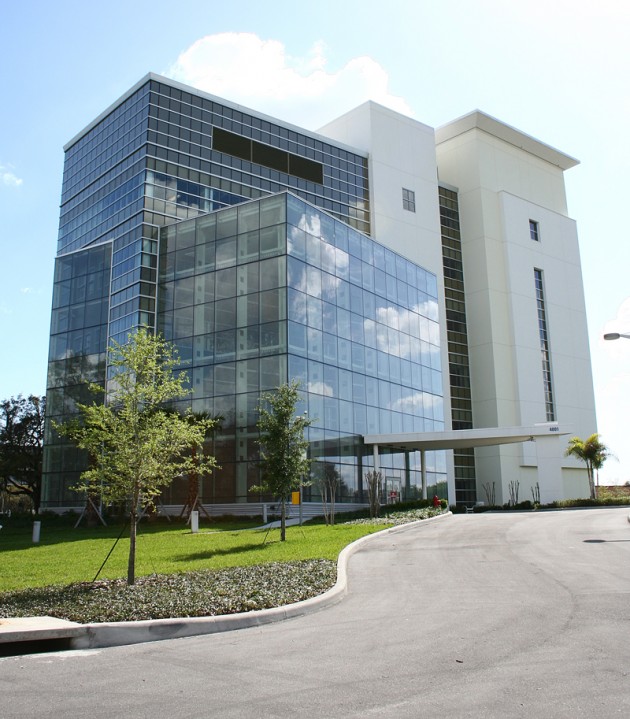University finishes review of Rao case

University administrators completed their review concerning Dr. Abdul Rao last week, and though no decisions were made that will directly affect Rao, recommendations were made to prevent similar issues from arising in the future.
The review, conducted by Paula Knaus, associate dean for Faculty and Staff Affairs in the College of Public Health, and Senior Vice Provost Dwayne Smith, concluded that though Rao believed his intentions were good and altruistic, he did not seem to grasp the full meaning of his actions.
“There is no question that Dr. Rao’s ability to serve as a senior administrator would have been substantially compromised for some time by this incident,” the report states.
The “climate” of the Byrd Institute at USF Health was also an issue of concern. One recommendation dealt with ensuring that the environment of the center was “productive.”
When the Byrd Institute merged with USF Health, it had no funding from the state and many staff positions were cut, which may have left a negative atmosphere among
employees, said USF spokesman Michael Hoad.
The posting of video surveillance posted on YouTube could have changed the outcome of the situation, and its effects should be looked into to prevent similar incidents in the future, the report states.
A video of Rao and an acquaintance, Victor Waiters, a homeless man, was posted on YouTube on the morning of Feb.12. The video shows the two men pull up to the loading dock of the Byrd Institute between 8 and 9 p.m. on Feb. 9, take a bicycle from the dock and drive away.
The bicycle was returned Feb. 10 just after 12:30, as seen on further surveillance video — but not before the student who parked the bike there, Christine Dillingham, found it missing. The bike belonged to her friend, graduate student Timothy Boyd.
Rao told the Oracle that the bicycles under the loading dock appeared to be abandoned, and that such a possibility was not unlikely because many employees who had recently been laid off had left belongings at the institute. When he aided Waiters in taking the bike, Rao said, he did not feel the was doing anything wrong because he was simply borrowing it.
Controversy surrounded the issue because video of the incident was posted on the Internet before authorities had time to take proper action. When the surveillance video was viewed Feb. 10, Boyd asked to receive a copy of the tape, but the report states that he maintained he was not the person who posted the videos to YouTube.
“We found the widespread viewing of the Byrd Institute security video occurred in an atmosphere void of any procedural guidelines,” the administrative report states. “It is our opinion that copies should not have been transferred to anyone without following proper protocol for release of a public record that may become evidence in criminal or civil litigation.”
Rao resigned from his position before any disciplinary action or reviews could yield decisions regarding the situation.
“As soon as I learned of the incident, I placed the administrator on annual leave and removed his administrative responsibilities,” wrote Stephen Klasko, dean of the College of Medicine, to Knaus and Smith. “Shortly thereafter, he chose to resign and has left the University.”
For future issues, Knaus and Smith suggest in the report that guidelines be set up for viewing and distributing security tapes.
“Our concern is predicated on the fact that the unfettered access demonstrated in the case discussed here could seriously compromise future investigations and/or prosecutions of serious criminal or civil matters,” the report states.
Klasko wrote that a lot of the surveillance equipment had not yet been integrated with USF’s systems.
“We will continue to integrate those systems to achieve the goal (outlined), which is to preserve a secure chain of evidence,” he stated.
When reviewing tapes and conducting interviews, Knaus and Smith were unable to determine whether the bike was locked at the loading dock — a fact that differed among interviewees’ accounts and could not clearly be determined by watching the surveillance tapes.
Another controversial topic that varied among accounts of the incident was whether Rao put pressure on Boyd to drop the charges once the bicycle was returned.
Rao called Boyd into his office Feb. 11 after he learned of the events that transpired after the incident. He apologized for taking the bicycle and asked Boyd to consider refraining from taking action against him. Boyd, however, felt Rao pressured him to drop the charges.
“Mr. Boyd indicated … Dr. Rao was civil in his request and was not threatening or intimidating in his manner of address,” the report states.
However, administrators wrote that tensions among employees that originated when USF and the Byrd Institute merged were evident in interviews.
“Mr. Boyd’s opinion of Dr. Rao was clearly negative,” they stated. “We believe that such tensions contributed significantly to the volume and far-reaching extent of the ensuing furor.”
Knaus and Smith interviewed several sources to determine further steps and recommendations regarding the investigation. Dillingham and Boyd were both spoken to in the presence of Boyd’s attorney. Byrd Institute employees Christine Tam, interim director of operations, Zoe Gustafson, chief financial officer, and Patrick Zorn, security and building assistant, were spoken to, as well as Dr. Huntington Potter, senior research scientist and former director of the Byrd Institute. Knaus and Smith also spoke with Mike Chapel, the Siemens technician who first obtained and watched the tapes.
Rao declined an interview on the advice of his attorney, the report stated. Instead, the administrators used police statements from both Rao and Waiters to construct their side of the story.
Klasko stated that further integration between the Byrd Institute and USF is needed.
“We are scheduling a retreat to address the big issue: creating a sense of identity for all the researchers and clinicians who now call the Byrd Institute home,” he stated.
Hoad said this ends any involvement by USF in the case.





